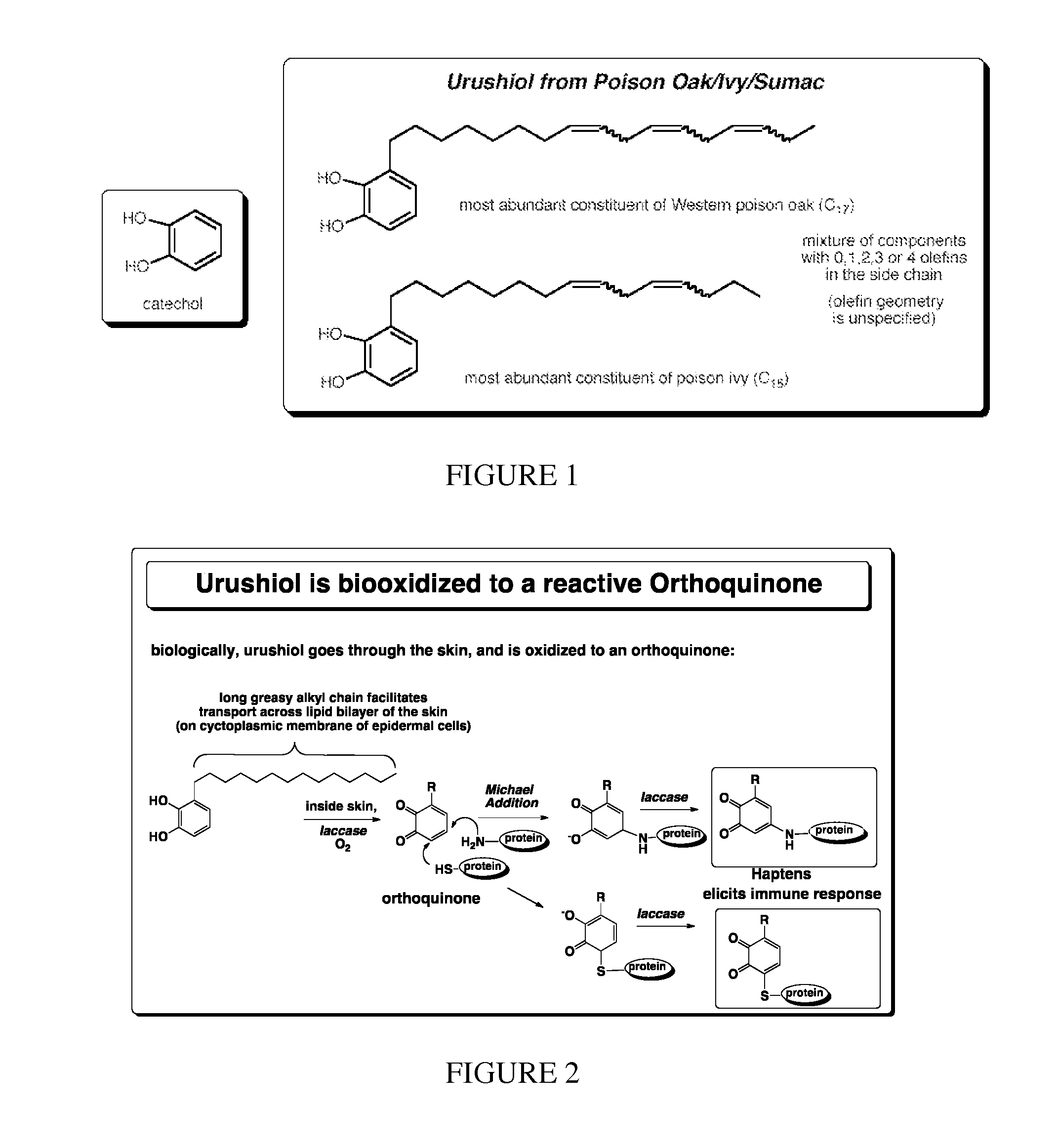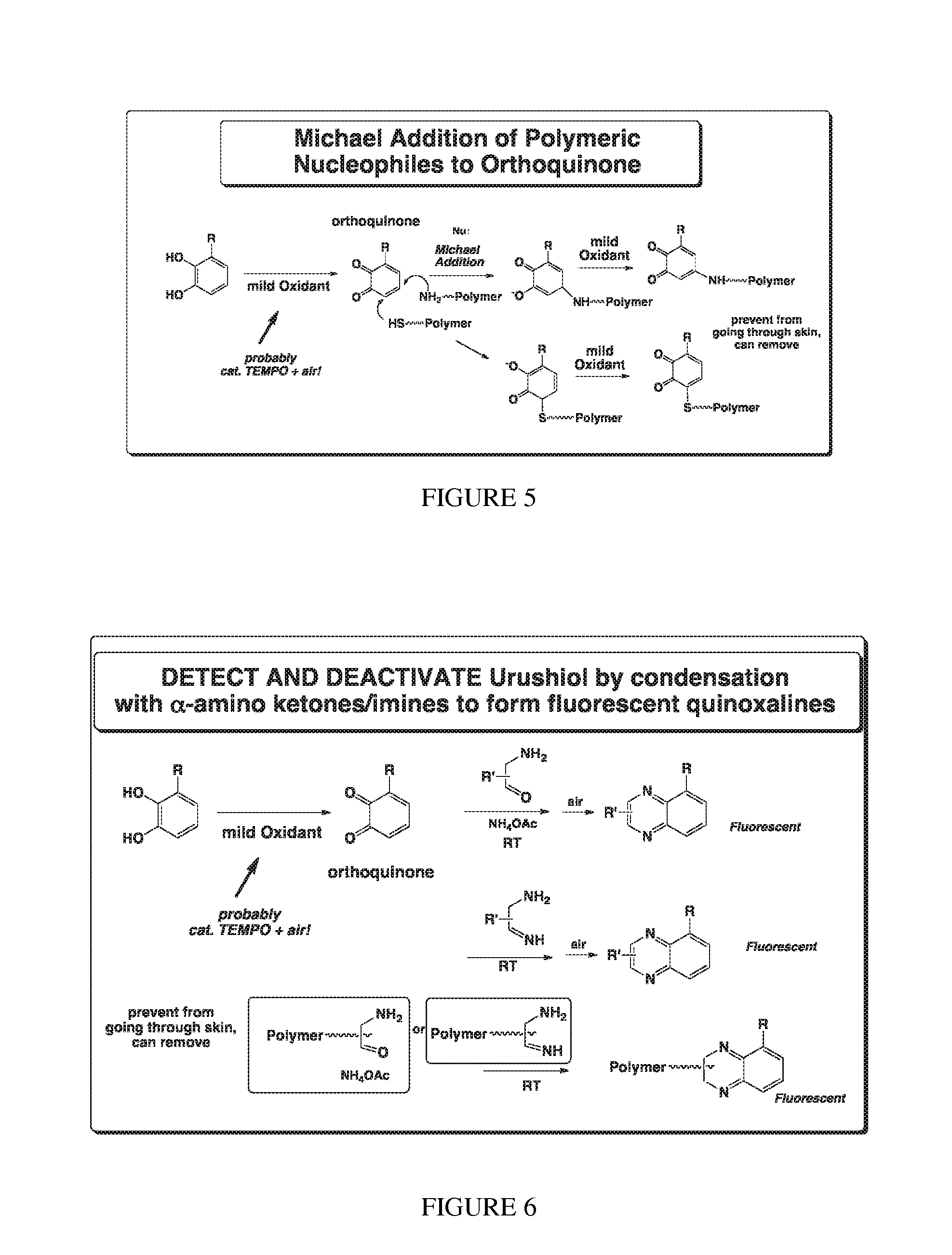Deactivation of urushiol and method of treament and prevention of contact dermatitis
a technology of urushiol and urushiol, which is applied in the direction of immunological disorders, drug compositions, peptide/protein ingredients, etc., can solve the problems of unfavorable side effects, failure to achieve the effect and the failure of a comprehensive plan
- Summary
- Abstract
- Description
- Claims
- Application Information
AI Technical Summary
Benefits of technology
Problems solved by technology
Method used
Image
Examples
example i
Synthesis and Development of the Components of the Deactivation Method: Optimize the Selection of the Oxidant and / or Catalyst to Effect Oxidation of the Catechol (or Phenolic Precursor) to the Orthoquinone, Optimize the Choice of Orthoquinoe Trap, and Whether any or all Components Will be Polymer-Supported
[0065]In the case of a nitroxide catalyst for oxidation, the chemical design of the nitroxide can be explored, entailing the choice of the optimum nitroxide and tether to prepare a robust, soluble and effective component for this deactivation system. The six-membered ring TEMPO is by far the most common nitroxide scaffold, however there are a number of other common stable nitroxide classes. Considerations in optimization of the nitroxide structure include ease and cost of synthesis, versatility in designing and optimizing the tether between the nitroxide if attached to a polymer, stability and solubility. Common stable nitroxide classes include TEMPO (tetramethylpiperidinyl-1-oxyl)...
example ii
Optimizing the Detection System with Regard to Stoichiometry, Solvent, Concentration, Reaction Time, and Compatibility with Skin or Inanimate Object Application
[0066]Time and effectiveness in deactivating the bulk of urushiol is explored. As exposure to 0.001 mg of urushiol can elicit allergic contact dermatitis, very small amounts of urushiol should to be deactivated to make this method effective. The optimal stoichiometry to obtain a short reaction time and complete deactivation is needed.
[0067]The use of other mild oxidants that will rapidly oxidize hydroxylamine to nitroxide in organic solvents, but not oxidize catechol to quinone, are investigated. Particularly attractive are iron salts as less toxic alternatives to copper.
PUM
| Property | Measurement | Unit |
|---|---|---|
| wavelength | aaaaa | aaaaa |
| wavelength | aaaaa | aaaaa |
| wavelength | aaaaa | aaaaa |
Abstract
Description
Claims
Application Information
 Login to View More
Login to View More - R&D
- Intellectual Property
- Life Sciences
- Materials
- Tech Scout
- Unparalleled Data Quality
- Higher Quality Content
- 60% Fewer Hallucinations
Browse by: Latest US Patents, China's latest patents, Technical Efficacy Thesaurus, Application Domain, Technology Topic, Popular Technical Reports.
© 2025 PatSnap. All rights reserved.Legal|Privacy policy|Modern Slavery Act Transparency Statement|Sitemap|About US| Contact US: help@patsnap.com



